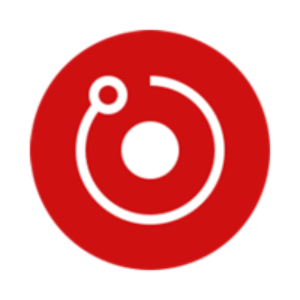
Render Network
Render Network Prijsconverter
Render Network Informatie
Render Network Markten
Render Network Ondersteunde Platforms
| RENDER | SPL | SOL | rndrizKT3MK1iimdxRdWabcF7Zg7AR5T4nud4EkHBof | 2023-10-31 |
| RNDR | ERC20 | ETH | 0x6de037ef9ad2725eb40118bb1702ebb27e4aeb24 | 2019-02-12 |
| RNDR | ERC20 | POL | 0x61299774020da444af134c82fa83e3810b309991 | 2021-03-11 |
| RNDRV1 | ERC20 | ETH | 0x0996bfb5d057faa237640e2506be7b4f9c46de0b | 2017-10-05 |
Over ons Render Network
Ang Render Network ay isang desentralisadong platform na batay sa blockchain na dinisenyo upang magbigay ng mga distributed GPU rendering solutions. Pinapayagan nito ang mga lumikha, tulad ng mga artista at developer, na kumonekta sa mga node operator na may idle GPU resources. Sa pamamagitan ng sistemang ito, pinadali ng network ang mga computationally intensive na gawain tulad ng pag-render ng 3D content, virtual production, product design, at mga AI-driven workload. Ginagamit ng Render Network ang teknolohiya ng blockchain upang matiyak ang mahusay, scalable, at cost-effective na mga proseso ng pag-render, na nag-aalok sa mga creator ng access sa virtually unlimited computational power habang pinapayagan ang mga may-ari ng GPU na pagkakitaan ang hindi nagamit na kapasidad.
Ang network ay tumatakbo sa pamamagitan ng isang desentralisadong system ng peer-to-peer, kung saan ang lahat ng interaksyon ay nare-record sa on-chain para sa transparency at traceability. Sa pamamagitan ng pag-integrate ng mga tool tulad ng ORBX file format at pagtutok sa multi-tiered pricing, pinapahusay ng platform ang mga rendering jobs batay sa mga salik tulad ng bilis, gastos, at kalidad.
Ang RENDER, na dati ay kilala bilang RNDR, ay ang katutubong cryptocurrency ng Render Network at may maraming layunin:
- Mga Bayad sa Transaksyon: Ang RENDER ay ginagamit upang magbayad para sa mga rendering tasks at computational services sa network.
- Mga Gantimpala sa Node: Ang mga node operator na nag-aambag ng GPU resources upang kumpletuhin ang mga rendering tasks ay tumatanggap ng RENDER tokens bilang kabayaran.
- Staking: Ang RENDER ay maaaring i-stake upang i-secure ang network at makilahok sa pamamahala.
- Pamamahala: Ang mga may hawak ng token ay maaaring bumoto sa mga Panukala ng Render Network (RNPs), na tumutukoy sa mga upgrades, polisiya, at iba pang pagbabago sa protocol.
- Pag-unlad ng Ecosystem: Sinusuportahan ng mga RENDER tokens ang paglago ng network sa pamamagitan ng pagpopondong mga grant at nagbibigay ng insentibo sa mga inisyatibong pinapatakbo ng komunidad.
Ang Render Network ay binuo ng Render Foundation, isang not-for-profit na organisasyon na responsable sa pagpapanatili ng protocol at pagsuporta sa komunidad nito. Ang mga pangunahing miyembro ng koponan ay kinabibilangan ng:
- Tristan Relly (Ulo ng Operasyon)
- Andrew Hyde (Ulo ng Komunikasyon)
- Trevor Harries-Jones (Lupon ng mga Direktor ng Foundation)
- Sunny Osahn (Pangulo ng Social Engagement)
- Nikola Verba, Zack In, at Alex Nullius (Pag-develop).
Ang foundation ay nagmamasid sa proseso ng pamamahala, nag-facilitate ng mga estratehikong desisyon, at nagtutulak sa ebolusyon ng Render Network sa pamamagitan ng sistema ng Render Network Proposal (RNP).
Ang Render Network ay optimized para sa mga AI at GPU-intensive na gawain, sinusuportahan ang lumalagong pangangailangan para sa AI-driven na paglikha ng content at computation. Ang mga pangunahing tampok ay kinabibilangan ng:
- AI-Assisted Rendering: Pinapayagan ng network ang paggamit ng mga AI tools para sa pag-optimize ng pag-render, tulad ng denoising at AI-driven asset generation.
- Generative AI Workflows: Maaaring i-integrate ng mga artista at developer ang mga generative AI tools upang lumikha ng mga textures, modelo, at dynamic content para sa ultra-high-resolution 3D environments.
- On-Chain Traceability: Lahat ng trabahong pinroseso sa network ay may hashed metadata, na nagbibigay-daan sa AI training at inferencing na may transparent na provenance at licensing.
- Distributed GPU Training: Sinusuportahan ng network ang mga distributed AI training tasks, na gumagamit ng idle GPUs para sa cost-effective na pag-develop ng machine learning model.